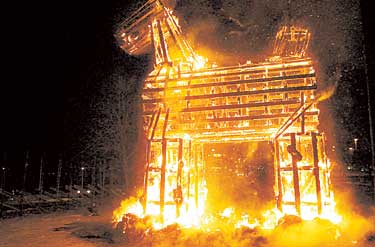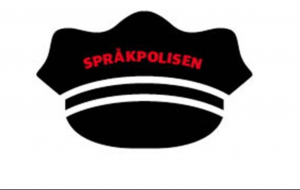What is the Gävle Goat?
The Gävle Goat is a traditional Christmas display erected annually at Slottstorget (Castle Square) in central Gävle. The goat has a history of being burnt down roughly every other year. From 1988 onward, English bookmakers made it possible to bet on the goat’s destiny. The goat has also featured in the Guinness Book of Records at least twice.
Is the Gävle Goat supposed to be burnt down?
No. Burning the goat is an illegal act and can result in fines or even prison time for arson. However, up to 2005, only four people have been caught or convicted.
The burning of the Gävle Goat is not officially welcomed by the citizens of Gävle, but it has made the goat famous and led to increased tourism. The Department of Tourism in Gävle gets bombarded with e-mails from all over the world questioning whether the city supports the burning of the Gävle Goat. Officially the city says that it does not support the burnings.
Has anyone been convicted for burning down the goat?
In 2001, a 51-year-old American visitor set fire to the goat. He had to spend 18 days in jail. Then he was convicted and ordered to pay 100,000 SEK in damages. The court also confiscated his cigarette lighter with the argument that he clearly was not able to handle it. The American stated in court that he is no “goat burner”, and believed that he was taking part in a completely legal goat-burning tradition.
In 2005, unknown vandals reportedly dressed as Santa and the gingerbread man burnt the goat down. They shoot a flaming arrow at the goat. The goat was reconstructed on 5 December. Swedish TV broadcasted the hunt for the arsonist responsible for the goat-burning. The programme the weekly Swedish live broadcast TV3’s “Most Wanted” (“Efterlyst“) on 8 December.
People have tried different approaches to prevent the goat from burning down. This includes various flame repellents, web cam surveillance, and local volunteers guarding the goat. Despite this, the goat has a survival rate of about 45%. Click here to see statistics over the years.







